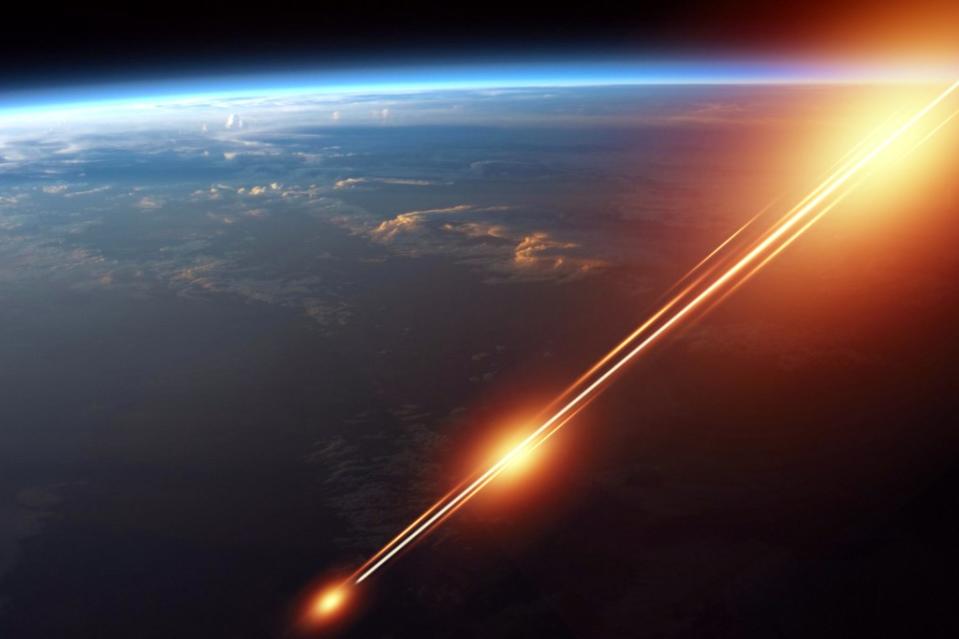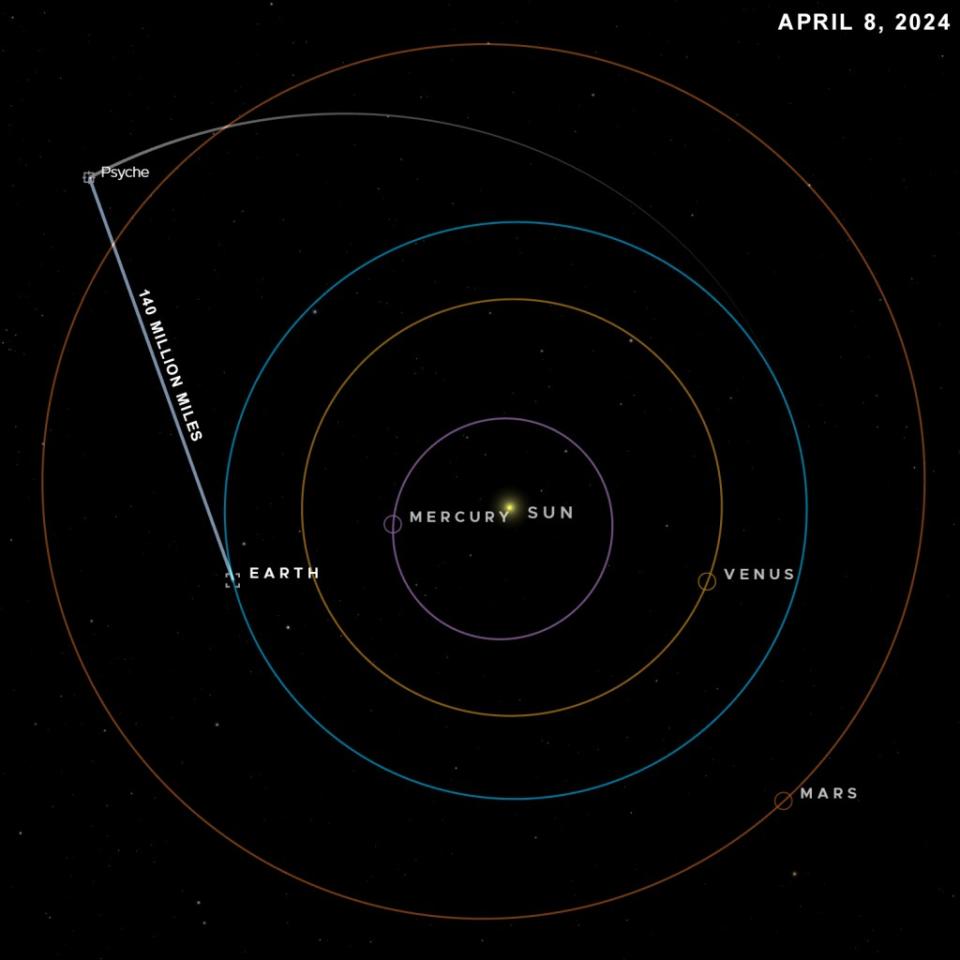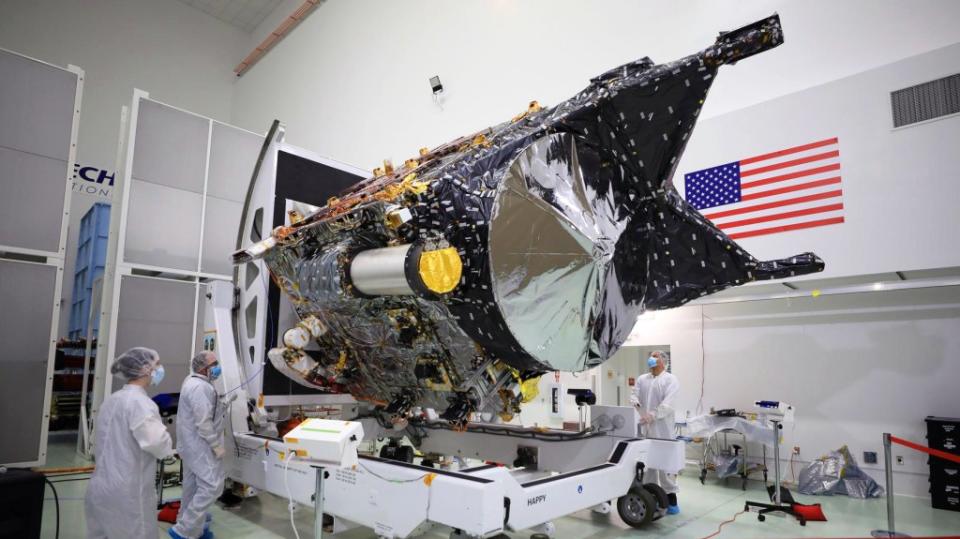Space laser transmission strikes Earth from 140 million miles away: NASA

This redefined a long-distance call.
Earth just received a laser transmission from a world- (and perhaps universe-) record-breaking 140 million miles away — which could have major implications for the future of space travel.
However, this correspondence wasn’t extraterrestrial in origin: It was actually sent by NASA’s Psyche spacecraft, which is currently located approximately 1.5 times the distance between Earth and the sun.

“This represents a significant milestone for the project by showing how optical communications can interface with a spacecraft’s radio frequency comms system,” Meera Srinivasan, the project’s operations lead at NASA’s Jet Propulsion Laboratory in Southern California, said in a statement.
This major breakthrough was achieved by using a Psyche feature called Deep Space Optical Communications, or DSOC, one of the droid’s several tasks per Space.com.
Its main directive is exploring 16 Psyche, the asteroid from which it takes its name.
NASA wanted to show the potential for laser communications to be conducted across interstellar distances, allowing for high bandwidth and a much speedier connection — from 10 to 100 times faster than what’s available today — between humans and the probes they send into space.

This achievement was particularly significant as, along with sending the laser message a record-breaking distance, NASA managed to transmit actual data gathered from the spacecraft.
“We downlinked about 10 minutes of duplicated spacecraft data,” explained Srinivasan. “Until then, we’d been sending test and diagnostic data in our downlinks from Psyche.”
To wit, in November last year, Psyche sent back to Earth from 10 million miles away, but it was pre-loaded test data and not any “real” info.
This marked the culmination of a series of messages sent by the probe since it launched on October 13 atop a SpaceX Falcon Heavy Rocket.
During a dry run in December, Psyche beamed data back from 19 million miles away, sending it at the system’s maximum rate of 267 megabits per second.
This correspondence — which included footage of an orange tabby cat named Taters — took just over a minute and a half to reach Earth, which is comparable to broadband internet speeds.
By contrast, this latest DSOC transmission was only 25 megabits.
This was due to the fact that Psyche was seven times farther away, reducing the speed at which it could send and receive messages.

Despite the comparatively syrupy speed, this nonetheless eclipsed the project’s goal of “proving at least 1 Mbps was possible at that distance,” per the release.
This watershed moment provides a taste of how spacecraft “could use optical communications in support of humanity’s next giant leap: sending humans to Mars,” NASA wrote.
Psyche is slated to fly by the Red Planet by 2026, whereupon it will fly toward its main destination, 16 Psyche, which it should reach by 2029.
Like the early pioneers’ search for the Northwest Passage, it will aim to map out this final frontier El Dorado, which contains enough precious metals to crash the gold market.

